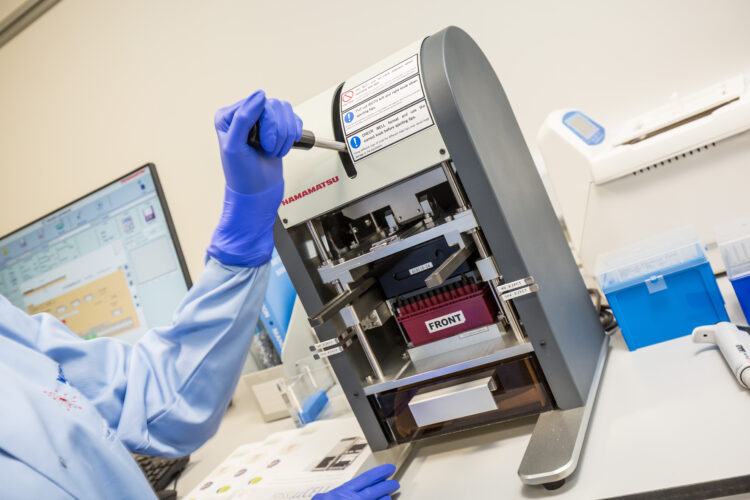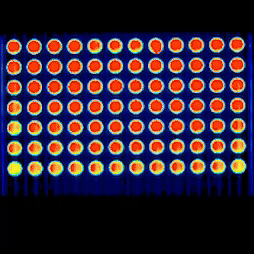Technical Case Study: Real-Time Antioxidant Screening Using FDSS µCell from Hamamatsu

 Figure 1. 1-hour time-lapse video showing fluorescence signal decay using the FDSS/uCELL
Figure 1. 1-hour time-lapse video showing fluorescence signal decay using the FDSS/uCELL
Introduction
Oxidative stress, triggered by UV exposure, pollution, and environmental factors, accelerates skin ageing, inflammation, and cellular damage. Antioxidants counteract these effects by neutralising reactive oxygen species (ROS).
Traditional endpoint assays provide only a single time-point measurement, which fails to capture real-time oxidation dynamics and can lead to misleading conclusions about antioxidant efficacy. The FDSS µCell continuously monitors fluorescence decay, lag time before oxidation, and area under the curve (AUC), offering a more precise and reliable evaluation of antioxidant protection. This high-throughput method enables real-time tracking of oxidative processes, making it ideal for accurate assessment of antioxidant performance in skincare and pharmaceutical applications.
Method
The assay was continuously monitored for 1 hour, with measurements collected every 0.6 seconds, allowing for high-resolution tracking of antioxidant activity.
Results
Both Trolox (Vitamin E analogue) and ascorbic acid (vitamin C) exhibited concentration-dependent antioxidant activity, with higher concentration delaying fluorescence decay, and increasing AUC.
A strong correlation between antioxidant concentration and fluorescence preservation was observed (R2 = 0.96 and R2 = 0.99 for ascorbic acid), confirming a predictable concentration-response relationship. These results validate the FDSS µCell as a precise and reproducible tool for measuring antioxidant activity in real-time.

Figure 2. Trolox and Ascorbic Acid Fluorescence Decay (30-Second Interval Data)
Data represents the mean fluorescence intensity of four replicates at each time point, normalised to the 0-minute time point (set to 100%) to show percentage fluorescence decay with data points connected by a line for visual clarity
Trolox demonstrates concentration-dependent protection, while ascorbic acid provides radical neutralisation but may degrade over time.
Conclusion
The FDSS µCell enables high-resolution, real-time kinetic tracking of antioxidant activity, making it a powerful tool for fluorescence-based assays. It’s ability to capture measurements every 0.6 seconds (see figure 3 below ) allows for kinetic reactions to be resolved precisely and in real time, quantifying changes in fluorescence decay, ensuring accurate identification of key inflection points, such as the onset of oxidation and antioxidant protection.

Figure 3. Trolox and Ascorbic Acid Fluorescence Decay (0.6-Second High-Resolution Data)
High-speed data acquisition (every 0.6 seconds) was conducted over 1.5 minutes, offering a detailed snapshot of assay kinetics.
The high temporal resolution of the µCell FDSS system enables real-time detection of rapid antioxidant interactions. Upon AAPH addition (free radical generator), fluorescence is immediately quenched, producing a sharp signal drop. This early-stage oxidative response is often overlooked in traditional plate-based assays. However, with the µCell FDSS system’s fine-scale data capture, we can unravel previously undetectable kinetic events, revealing critical insights into antioxidant behaviour and radical interactions.
These results confirm that the FDSS µCell is an advanced, high-throughput solution for measuring kinetic antioxidant behaviour, offering an unmatched combination of sensitivity, reproducibility, and real-time monitoring. It’s capabilities to track concentration-dependent antioxidant responses makes it ideal for applications in cosmetics and pharmaceuticals.
Technical work carried out by Amy Kerry.